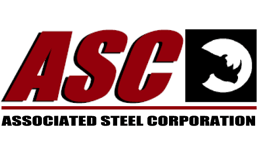Stainless steel is defined as any steel containing a minimum of 10-3/4% chromium, or 11%, depending on what your reference is.
Stainless steel generally resists corrosive damage better than carbon steel and medium-alloyed carbon steel. Corrosion might be atmospheric (airborne particles), spray, gaseous, or liquid. How bad the corrosion is will be subject to an infinite number of variables, such as:
- Variations in temperature (service temperature)
- movement
- solution strength
- stress
- torque
- air bubbles (aeriation)
- vibration,
There is not just one type of corrosion. That would be like saying that Mankind defines just one type of human being.
In the steel community stainless steel is defined by grades that may fall within different groups, just as tool steels are broken into logical groups. With stainless steel, grain type has the most influence on the grades. If I try to talk from a molecular level here, it will not be good. I will stay on more familiar ground and use baking again. When you think of grain composition of steel, think of the differences between bagels and angel food cake; different consistency, different texture, very different personalities. You have probably tasted a bagel. But, if you haven’t had angel food cake you need to have a piece so you get the point on grain structure. Do it for research sake.
In this post, however, stainless groups will be defined by the business-type they most likely serve. In the final analysis, global usage determines price and most importantly, availability. Your definition of “availability” of the steel will be dependent on whether or not you can not only get the grade, but get it in the right shape, size, length, condition, and quantity that you need.
Stainless for general use and production -generally those grades have been engineered to be economical, serviceable, and subject to ease of manufacturing. They are also WIDELY AVAILABLE, so long as somebody continues to use them in sufficient quantity. Generally, they will be available in the form most often utilized by the biggest end user. An example would be types 303, 304L and 316L. For decades these have been accepted as “standard grades” because they continue to enjoy a robust usage. Other steel grades (not just stainless) have pretty much gone the way of the Dodo bird; to a large extent 4330, 4135, 6150, and others come to mind. They may be available to certain groups for specific needs, but, in general they are no longer considered to be standard grades.
Economical grades that have been slightly modified for specific service in specific applications. – Such as “muffler stock” (which we really are going to discuss here in a bit), stainless material for appliances, etc.
Very refined stainless materials, expensive and somewhat less available. These grades have been engineered to solve particular problems in critical service conditions. I have always referred to these grades as “Exotics”. In context of any posts written here, they will include the “high nickel” grades. You can purchase them, but they are generally cost prohibitive for resolution of all but the most serious of problems in a plant. They will be available in somewhat of a limited availability of shape, and size, etc. To repeat: these high end grades are most appropriate for the industries that can afford them. They are generally cost prohibitive for all but military, aerospace, medicine, and grant projects.
-Howard Thomas, September 5th 2017
